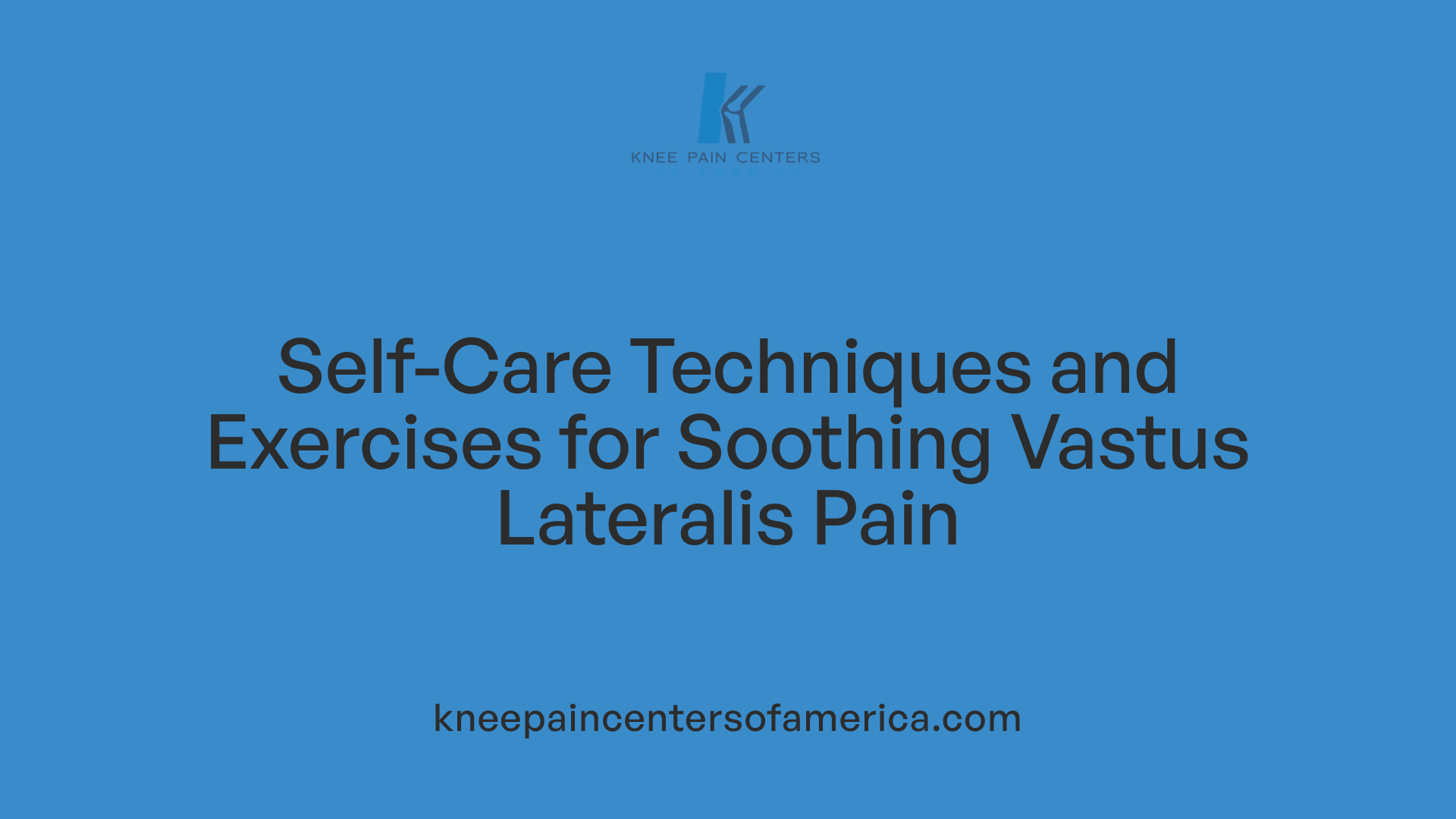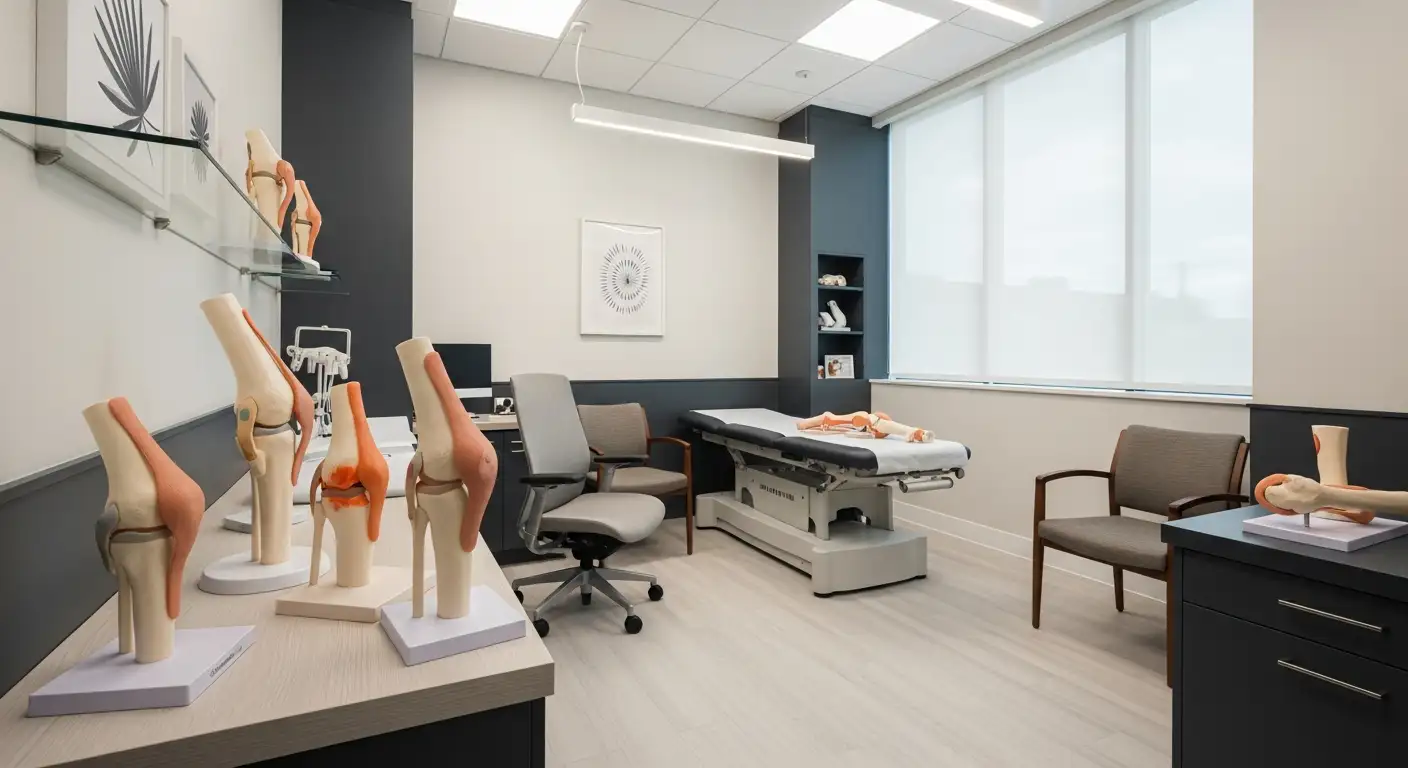Understanding Vastus Lateralis and Its Role in Knee Health
The vastus lateralis is a key muscle in the thigh, playing a vital role in extending the knee and stabilizing the patella. Located on the lateral side of the thigh, it is the largest of the quadriceps muscles, originating from several points including the greater trochanter and linea aspera, and inserting into the lateral quadriceps tendon attached to the tibial tubercle. Its primary function involves enabling activities such as walking, running, jumping, and standing up from sitting. Understanding its anatomy and how it influences knee stability sets the foundation for recognizing common injuries and effective treatment options.
Anatomy and Function of the Vastus Lateralis Muscle

What is the anatomy and function of the vastus lateralis muscle?
The vastus lateralis is the largest of the four muscles that make up the quadriceps group, situated on the outer part of the thigh. It plays a crucial role in knee movement and stability.
Muscle Origins and Insertions: The muscle originates from multiple points including the upper intertrochanteric line, the base of the greater trochanter, lateral linea aspera of the femur, lateral supracondylar ridge, and lateral intermuscular septum. It inserts into the lateral aspect of the quadriceps tendon, which attaches to the tibial tubercle.
Innervation and Blood Supply: The vastus lateralis is mainly supplied by the femoral nerve, specifically its posterior division (L3, L4). Its blood supply comes from branches of the lateral circumflex femoral artery.
Primary Functions: This muscle is primarily responsible for extending the knee joint, a movement involved in walking, running, climbing stairs, and rising from a seated position. It also helps in stabilizing the patella (kneecap) during movement, which prevents issues like kneecap dislocation or misalignment.
Understanding its anatomy and functions helps in diagnosing related injuries and devising effective rehabilitation and treatment strategies, including targeted exercises and trigger point relief techniques.
Causes and Symptoms of Vastus Lateralis Pain

What are common causes and symptoms of pain in the vastus lateralis muscle?
Pain in the vastus lateralis muscle, which is the largest muscle of the quadriceps group located on the outer side of the thigh, can stem from several different causes. Common issues include strains from overstretching or forceful contractions, overuse injuries such as tendinitis, or trauma from sudden impacts or accidents. Muscle imbalance, where the vastus lateralis is stronger or tighter than its counterparts, may contribute to localized pain and dysfunction.
Injuries such as muscle tears and the formation of trigger points are also frequent causes of discomfort. Trigger points are areas of muscle tightness that irritate nerves and refer pain to surrounding regions. These trigger points can produce symptoms like tenderness, swelling, or a feeling of tightness within the muscle. Patients often experience pain during activities involving knee extension such as walking, running, climbing stairs, or jumping.
Referred pain is a typical feature—trigger points in the vastus lateralis can cause pain not only localized in the outer thigh but also radiating to the knee, upper leg, or even up to the hip crest. Such referred pain can sometimes be mistaken for other issues like sciatic nerve pain or problems in the lower back.
Symptoms associated with vastus lateralis problems include tenderness when touching the muscle, swelling, muscle stiffness, and an occasional feeling of weakness or instability in the knee joint. In cases of severe injury or tears, sharp pain, bruising, swelling, and limited movement may be present. Proper diagnosis often involves physical examination, palpation for trigger points, and sometimes imaging to rule out other injuries.
Treatment options are diverse, including stretching and strengthening exercises targeted at balancing muscle function, massage therapy, trigger point release techniques such as dry needling, and activity modification to reduce overload.
In summary, pain in the vastus lateralis generally results from overuse, injury, or trigger points, and presents with tenderness, swelling, activity-related pain, and sometimes referred discomfort that affects daily movements and athletic performance.
Treatment of Vastus Lateralis Injury and Strain

How can the vastus lateralis muscle be treated for injury or strain?
Treating injuries or strains of the vastus lateralis involves a combination of immediate care and a structured rehabilitation process. Initially, the RICE protocol—rest, ice, compression, and elevation—is recommended. Applying ice reduces inflammation and pain, while elevating the leg helps limit swelling. Compression with bandages can provide additional support, and maintaining the knee in a slightly flexed position, around 120°, helps prevent further damage and complications like myositis ossificans, where bone forms within the muscle.
After the acute phase, a phased rehab program should begin. Gentle stretching exercises are introduced early, focusing on improving flexibility without overloading the muscle. Progressively, strengthening exercises such as isometric contractions, leg raises, squats, and lunges are incorporated. These movements rebuild muscle strength and stabilize the knee joint.
Manual therapies like trigger point release, massage, and soft tissue mobilization can assist in relieving muscle tightness and improving blood flow. Functional training, including activities that mimic daily or sports-specific movements, is essential to ensure a safe return to activity.
For less severe strains, conservative management often suffices, with most recovery occurring within six to eight weeks. However, complete ruptures or severe tears may require surgical repair, especially if the muscle's integrity is significantly compromised.
Patients can typically return to sports or regular activity only once full strength, range of motion, and functional ability are restored, confirming that healing is complete and the risk of re-injury is minimized.
Additional considerations
- Always seek professional guidance if symptoms worsen or fail to improve.
- Consistency with rehab exercises accelerates recovery and enhances outcomes.
- Avoid premature return to vigorous activity to prevent setbacks.
Exercises and Self-Care for Discomfort Relief

What exercises and self-care techniques can help relieve discomfort in the vastus lateralis?
Relieving discomfort in the vastus lateralis, a prominent muscle on the outer thigh, involves a combination of stretching, self-massage, and strengthening activities. Gentle stretching exercises like the prone towel quad stretch and the half-kneeling stretch are effective for easing tightness and improving flexibility. These stretches gradually extend the muscle, reducing trigger points that may cause pain.
Self-massage and trigger point release are also highly beneficial. Using tools like a tennis ball, a pillow, or a yoga bolster, you can apply pressure directly on tender spots along the outer thigh. Pressing on these trigger points for about 30 seconds helps to release muscle knots and decrease pain, promoting better muscle function.
In addition to flexibility and release techniques, strengthening exercises play a vital role in supporting the muscle and preventing future issues. Exercises such as leg presses, lunges, and bodyweight squats are excellent options to build strength and restore muscle balance. These activities help stabilize the knee joint, which is often affected by issues related to the vastus lateralis, such as patellofemoral pain syndrome.
Incorporating heat or cold therapy can further assist recovery. Applying ice packs in cases of inflammation or heat packs to relax the muscle before stretching can be beneficial. Nerve release exercises and overall functional training can help improve movement patterns and reduce strain on the muscle.
It is essential to approach self-care carefully and consult healthcare professionals before starting any new exercise or treatment regime. They can provide personalized guidance to ensure safety and effectiveness, especially if experiencing persistent or severe pain.
Vastus Lateralis Pain vs. Other Lateral Leg Conditions
Understanding the differences between vastus lateralis pain and other conditions affecting the lateral leg, such as Iliotibial Band Syndrome (ITBS), is important for accurate diagnosis and effective treatment.
Vastus lateralis pain generally originates within the muscle itself. It is often associated with trigger points—areas of muscle tightness caused by irritated nerves—and can result from muscle strains or imbalances. This type of pain is usually localized, with symptoms like soreness or tenderness directly over the muscle belly, especially along its outer thigh. Trigger points may cause referred pain, spreading to nearby tissues, and can contribute to issues like knee instability or patellar tracking problems.
In contrast, Iliotibial Band Syndrome primarily involves pain along the outer side of the thigh and the lateral knee. It stems from irritation and inflammation of the iliotibial band, a thick fibrous tissue running from the hip to the knee. ITBS is typically caused by overuse, repetitive movements, or friction of the band over the lateral femoral condyle, especially during running or biking. The pain is often activity-related and worsens with continued movement, usually easing with rest.
Clinically, these conditions can be differentiated by their pain patterns and response to specific tests. Muscle pain from vastus lateralis tend to be pinpointed with palpation and may improve with trigger point therapy or muscle balancing exercises. Pain from ITBS, on the other hand, may resist local palpation but will often respond to stretching of the IT band, foam rolling, and load management.
Treatment approaches vary accordingly. For vastus lateralis, therapies include massage, dry needling, stretching, strengthening exercises, and addressing muscle imbalances. For ITBS, management focuses on reducing inflammation, improving flexibility of the IT band through stretching, applying ice, and modifying activity levels.
In summary, although both conditions affect the lateral aspect of the thigh and knee, understanding their distinct features allows for targeted interventions that promote recovery and prevent recurrence.
More info search query: Vastus Lateralis Pain vs. Iliotibial Band Syndrome
| Condition | Primary Cause | Typical Symptoms | Treatment Strategies | Differentiating Features |
|---|---|---|---|---|
| Vastus Lateralis Pain | Muscle strain, trigger points, imbalances | Localized soreness, referred pain, knee instability | Trigger point therapy, strengthening, muscle balance | Local muscle tenderness, improve with manual therapy |
| Iliotibial Band Syndrome | Overuse, friction of the band | Lateral knee/outer thigh pain, activity-related | Stretching, foam rolling, rest, NSAIDs | Pain along the band, resistant to palpation, responds to band stretching |
Knowing these distinctions helps clinicians and individuals choose appropriate treatments, ensuring effective recovery.
Comprehensive Approach for Long-Term Recovery
Managing vastus lateralis pain effectively requires an integrated approach that includes accurate diagnosis, targeted therapies such as trigger point release and manual therapy, tailored exercises, and self-care techniques. Recognizing the difference between muscle-related pain and other lateral leg conditions aids in applying appropriate treatment strategies. Rehabilitation plays a crucial role in restoring strength, flexibility, and function, enabling individuals to return safely to their daily activities and sports. Early intervention and consistent management are key to preventing chronic issues and promoting long-term knee health.
References
- Ep.6: Trigger Point Release Method For Vastus Lateralis Pain
- Vastus Lateralis Function, Anatomy, and Rehabilitation
- Vastus Lateralis - Physiopedia
- Acupuncture for Vastus Lateralis Pain
- Lateral knee pain - Musculoskeletal Matters
- Trigger point pain from Vastus Lateralis and how to find relief
- Video: Vastus Lateralis Muscle Pain & Tear - Study.com
- Vastus Lateralis Trigger Points: The Knee Pain Trigger Points - Part 1
- Quadriceps Muscle Strain - Physiopedia
- Vastus Intermedius Trigger Point Radiating Pain





